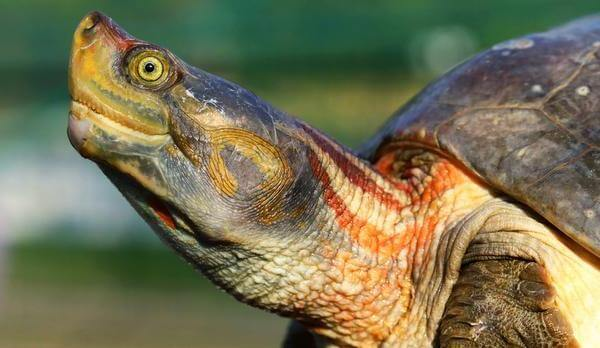Biodiversity & Environment
Red Crowned Roofed Turtle
- 18 Nov 2022
- 5 min read
For Prelims: Convention on International Trade in Endangered Species, IUCN, Batagur kachuga, Bengal Roofed turtle.
For Mains: Red Crowned Roofed Turtle.
Why in News?
India has proposed to protect the Red-Crowned Roofed turtle at the 19th Conference of the Parties to CITES (Convention on International Trade in Endangered Species) in Panama.
What are the Highlights of the Conference?
- India has raised a proposal to the United Nations Convention on International Trade in Endangered Species on Wild Fauna and Flora for the addition of the riverine species to Appendix I from current Appendix II.
- The species covered by CITES are listed in three Appendices as per the degree of protection they need:
- Appendix I includes species threatened with extinction.
- Appendix II includes species not necessarily threatened with extinction but (where trade must be controlled).
- Appendix III contains species that are protected in at least one country, which has asked other CITES parties for assistance in controlling the trade.
- The species covered by CITES are listed in three Appendices as per the degree of protection they need:
- The 19th Conference of the Parties to CITES is being asked to consider stricter trade regulations for nearly six hundred species of animals and plants believed to be under increased threat of extinction from international trade.
What is a Red Crowned Roofed Turtle?
- Scientific Name: Batagur kachuga.
- Common Names: Bengal roof turtle, Red-crowned roofed turtle.
- About:
- Red Crowned Roofed Turtle is one of the 24 species endemic to India, is characterised by the bright colours such as red, yellow, white and blue on the faces and necks of the males.
- Distribution:
- It is a freshwater turtle species found in deep flowing rivers with terrestrial nesting sites.
- The Red-crowned roofed turtle is native to India, Bangladesh and Nepal.
- Historically, the species was widespread in the Ganga River, both in India and Bangladesh. It also occurs in the Brahmaputra basin.
- Currently in India, the National Chambal River Gharial Sanctuary is the only area with a substantial population of the species, but even this Protected Area and habitat are under threat.
- Threats:
- The species is highly susceptible to major hydrological projects and their impacts on river flow dynamics and nesting beaches, and water pollution. Since human activities on and along the river are disturbing, the entanglement in fishing nets has led to a significant impact on subpopulations.
- Degradation of habitat due to pollution and large-scale development activities like water extraction for human consumption and irrigation and irregular flow from the upstream dams and reservoirs are the main threats to these species.
- Sand mining and growing of seasonal crops along Ganga River are majorly affecting the sandbars along the river that are used by the species for nesting.
- Overharvesting the animal for illegal consumption and illegal international trade are other reasons for its extinction threat.
- Over 11,000 tortoises and freshwater turtles have been seized in India from 2009-2019, found a study by TRAFFIC, a global NGO working on trade in wild animals and plants and their conservation.
- Conservation Status:
- The International Union for Conservation of Nature (IUCN) Red List: Critically Endangered
- Wildlife Protection Act (WPA): Schedule I
- CITES : Appendix II
UPSC Civil Services Examination, Previous Year Question (PYQ)
Q. Consider the following fauna of India: (2013)
- Gharial
- Leatherback turtle
- Swamp deer
Which of the above is/are endangered?
(a) 1 and 2 only
(b) 3 only
(c) 1, 2 and 3
(d) None
Ans: (c)





